Menus
- How good is the entry-level bike?
- Strengths of the Kawasaki Z 650
- What are the weaknesses of the Kawa?
- Conclusion: a Z for everyone and for all cases
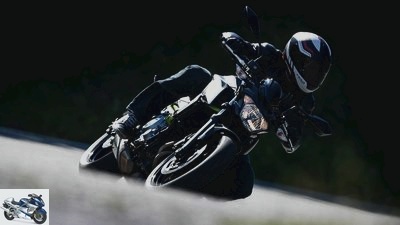
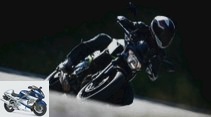
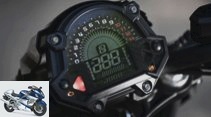
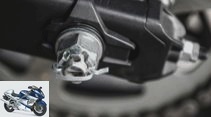
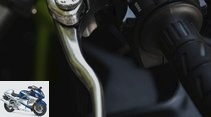
17th photos
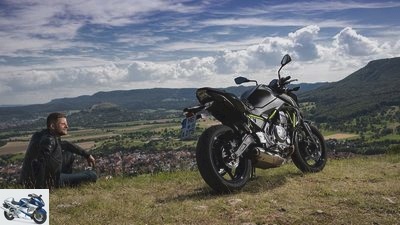
1/17
The Z 650 is very popular. This is no coincidence, but the result of an accurate conceptual orientation.
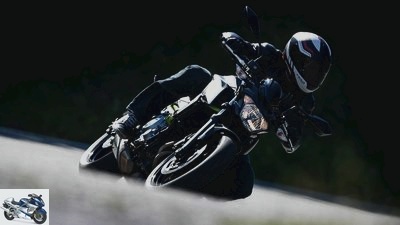
2/17
At the beginning of 2017, Kawasaki presented the Z 650.
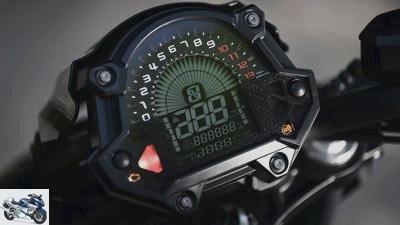
3/17
Somewhat small-scale display in the typical Kawa style with all the necessary information.
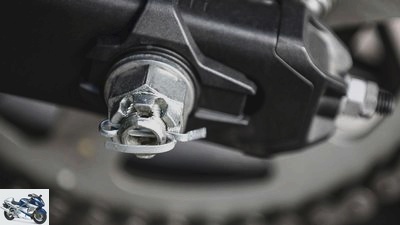
4/17
The cotter pin should look familiar to generations of Kawa drivers.
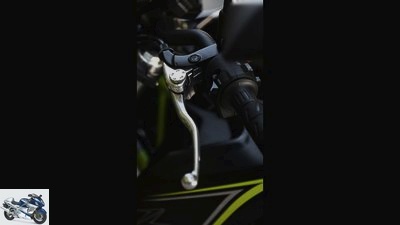
5/17
An adjustable clutch lever is not a matter of course even in higher price regions.
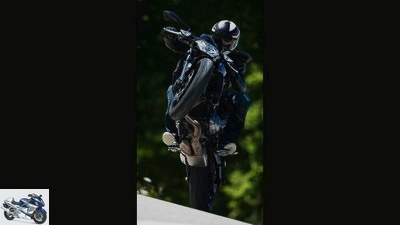
6/17
The Z 650 is not only sensible, it is also fun for everyone.
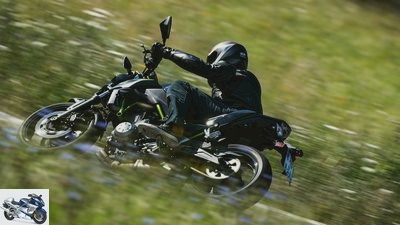
7/17
Whether transporting to work or a quick tour of the evening, the Z 650 always cuts a fine figure.
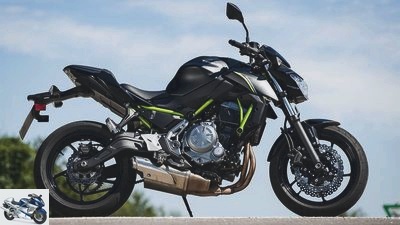
www.r-photography.info
8/17
Practical and frugal in everyday life, fun on the country road.
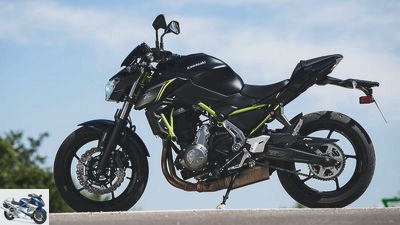
9/17
The engine of the Z 650 has an output of 68 hp.
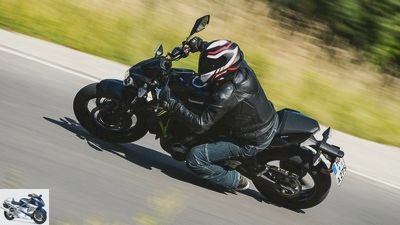
10/17
The previous model, the ER-6n, had 72 hp.
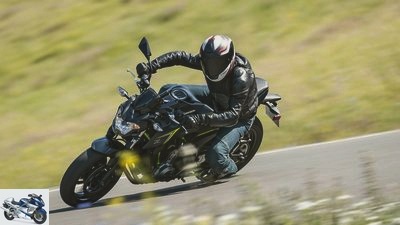
11/17
The torque increased from 64 Nm at 7,000 rpm to 66 Nm at 6,500 rpm.
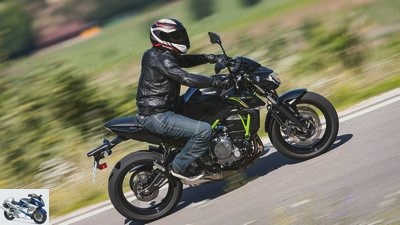
12/17
15 liters fit into the tank of the Z 650.
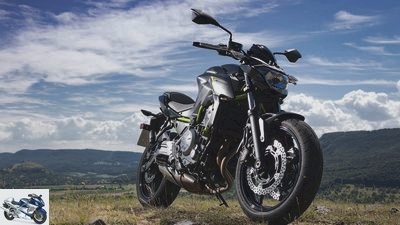
13/17
Compared to its predecessor, the Z 650 has decreased significantly. She refuses 187 kilograms with a full tank.
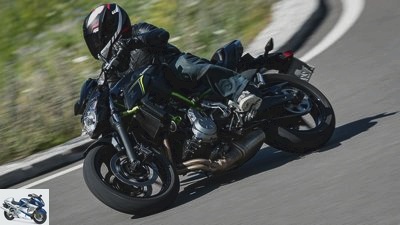
www.r-photography.info
14/17
The ER-6n weighed a whopping 208 kilograms.
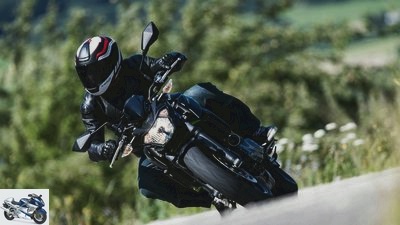
15/17
The Z 650 can be converted into a 48 hp bike by throttling.
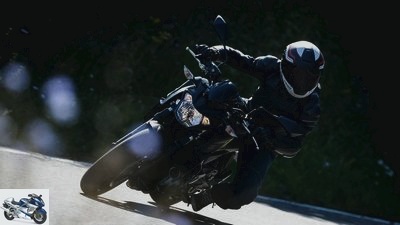
16/17
The Dunlop D 214 is mounted as standard.
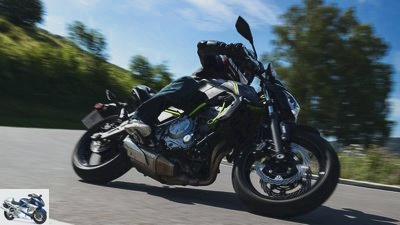
17/17
The Z 650 is available from 6,995 euros.
Kawasaki Z 650 in the test (2018)
How good is the entry-level bike?
The Kawasaki Z 650 was presented in early 2017. To a great success, as it turned out in the meantime, because the little Zett has since enjoyed as consistently high popularity as its predecessor ER-6n. This is no coincidence, but the result of an accurate conceptual orientation.
Things are going pretty well for Kawasaki right now. From January to October of this year the Greens from Akashi sold 12,615 motorcycles in Germany, replacing Honda as the most successful Japanese manufacturer in terms of numbers. Guarantee of success? Behind the still very popular Z 900 and its RS retro sisters, which have since been sold out, are two strong 650 middle graders. 2,786 Kawasaki Z 650 rolled from the dealers’ yards during the period mentioned, adding another 1,111 pieces of the closely related sports tourer sister Ninja 650. The small Sugomi-Naked is the fourth best-selling motorcycle in Germany – behind the R 1200 GS, MT-07 (3,105 pieces) , Z 900 (3,026 pieces), ahead of Africa Twin, KTM 790 Duke and Yamaha MT-09. Would you have guessed it? Reason to examine the Z 650 again in the second year of production. Why is such a motorcycle so popular? After a week of “Living with the Z 650” – no pylons, but a lot of everyday life, a lot of country roads – three theses emerge as an explanation.
Buy complete article
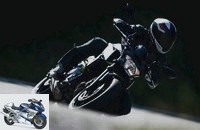
Kawasaki Z 650 in the test (2018)
How good is the entry-level bike?
Three theses for the success of the Z 650
First: The Z 650 offers absolutely real value. For an affordable 6,695 euros, King Customer receives a solidly made, no-frills two-cylinder roadster, in which the key data are consistently correct. Kawasaki advertises with 68 hp and 66 Newton meters of torque, and it is precisely these values that the test bench confirms. Thanks to the handsome filigree tubular steel frame, which replaces the bridge frame of the ER-6, and other diet measures, primarily on the swing arm and wheels, a significant 20 kilos were saved compared to the previous model. 188 kilos ready to drive are a pleasing value in this class. After all, the Z 650 with a 300 mm double disc brake system, lever between the shock absorber and swing arm and modern Bosch ABS is well equipped in this class.
The Z 650 is ideal for everyday use.
Second: The Z 650 is accessible in every respect. This relates primarily to their ergonomics, but includes a few other items. First of all, there is the beginner-friendly seat height of just 785 millimeters, which is also accompanied by a beautifully narrow waist. This results in an extremely short step arc length – good for little ones, youngsters, (re) beginners or simply everyone who appreciates a firm stance under all circumstances. Then the Z 650 is overall compact and rather low, but integrates the driver comfortably behind a short, slightly higher tank, on firm but comfortable upholstery. The handlebars are not particularly wide, and with their moderately sporty cranking, they guide you into a relaxed, active driving posture. Thanks to the wide steering angle, pushing, maneuvering and tough urban meandering can be achieved with the greatest of ease, even fun. Sufficiently large mirrors offer a good all-round view, adjustable levers for clutch and brake complete the picture. None of the interfaces between the rider and the motorcycle hold tripping hazards ready: The servo-assisted clutch is smooth and precise, the gears in the six-speed transmission find each other very smoothly and with short shifting paths. The drive implements gas commands spontaneously, but pleasantly, smoothly and with the right amount of flywheel. Another of numerous small indications: the tank of the Z 650 can be completely filled with fuel without fuss and without the patience of an angel. A marginal aspect in both senses of the word, admittedly, and at this point at the latest, one or the other may smile. On the other hand, this is unfortunately not a matter of course, as the drivers of some exotic devices will admit at this point. Human friendliness as a consistently drawn-out basic principle may be less sexy than a fire-breathing V4 with 215 hp – but it makes the Z 650 exceptionally personable in its own way.
In the test, the Z 650 impressed with its frugal consumption.
Thirdly, last but not least: the Z 650 finds a great intersection between everyday life and driving pleasure. It is immediately obvious that such a motorcycle does not raise any question marks on the way to the office / to the university / to the beer garden due to the properties mentioned. In life with a Z 650 there are more and more opportunities for which you simply take the motorcycle – instead of the usual, God forbid, the bike. This finding is supplemented by consumption: In normal operation, the in-line two-cylinder is content with around four liters per 100 kilometers, so that with a fuel supply of 15 liters, at least 300 kilometers are always feasible, usually more. In addition, the Kawasaki engineers chose a comfort-oriented set-up for the fork and shock absorber, thanks to which the Z 650 retains a pleasant basic level of comfort even on cobblestones.
Strengths of the Kawasaki Z 650
What then is more surprising and what the real strength of the all-purpose Zett lies in: This general good-naturedness, which also extends to the chassis, does not detract from the fun of driving on country roads. The reasons for this are a successful suspension compromise, in the best sense of the word, the functioning of all components without complaint, the drastically reduced vehicle weight and finally a pleasantly short overall gear ratio. At first, a look at the key data of the chassis reveals little that is unusual; 1,410 millimeter wheelbase, 100 millimeter caster, 65.5 degree steering head angle. Crisp, but not extreme. As usual in its class as the fact that apart from the spring preload there are no adjustment options. It’s nice that the Z 650 can still handle the brisk line. Soft, slightly underdamped at the front and rear, but by no means overwhelmed the Zett. Although it teeters noticeably over waves, it remains generally composed up to high tempos.
The display provides all the necessary information.
It is nimble, but not nervous, at the entrance to the curve, glides with reliable neutrality in sloping positions, where it is quite stable and where the reserves are almost endless thanks to the stops high above. Erection moment? Hard to find. The brakes are not only very easy to dose, but also with sufficient force, the ABS controls finely and only when it is really necessary. Of course, a hot spur could run over a Z 650 against its declared will – but that would have to pull hard on the cable.
The engine’s power is also sufficient for fun to long-term overland trips. Compared to the ER-6, the in-line twin with its deliberately chosen bottom-center coordination starts at 3,000 revolutions and not only unfolds smoothly, but also extremely linearly. The conventionally constructed 180-degree counter-runner only owes a bit to the gushing zeal of the best in class. Possibly also on their character, whereby the latter is subjectively to be booked as a question of taste. When it comes to pure fun, the 650 lacks a little desire at the top, from 8,000 revs. Here he pays the price of the torque-oriented design using smaller throttle valve diameters and tamer control times. A short secondary translation, however, skilfully conceals this. In principle, this does not interfere, but in return enables considerable acceleration and pulling power. Overall and the bottom line, it can be summarized as follows: The Z 650 achieves a skilful balancing act between flawless, easy controllability, great safety and considerable potential for pleasure. And expressly for everyone – not just beginners.
What are the weaknesses of the Kawa?
Criticism? Found of course, but more in the outskirts. For example, the passenger comfort is really poor, even for a machine of this class. The bench builds up briefly, drops steeply forward, the feet are too high in row two. Then, because of the special ergonomics with a low seat height, but high notches, the knee angle will be a bit sharp for longer drivers in the long run. A shortcoming that could be remedied quickly with a high bench from the Kawasaki accessories (160 euros). After a cold start, the engine warms up for a long time at increased idling speed.
The Z 650 changes hands from 6,995 euros.
A Kawasaki phenomenon, like the somewhat short 6000 service intervals. Besides, it vibrates. Not overly high-frequency or annoying, but pronounced, especially when pushing. Finally the first tires: The mounted Dunlop D 214 is okay, but nothing more. The tire sticks respectably in the dry, reports back acceptably, but overall feels not very fresh. And when it comes to wet grip, it doesn’t have an outstanding reputation. Viewed the other way around, the Z 650 would be just one set of really nice rubbers far from being even more fun to drive. That’s about it. Manageable points of criticism, not too tangible. Especially when you look back at the cost price: 6,695 euros. And it was already clear why the Z 650 was not one of the best-selling motorcycles in Germany by chance.
Conclusion: a Z for everyone and for all cases
At this point, people like to judge exotic machines as a good second, third or even fourth motorcycle. This time it’s different: The Z 650 is a great first motorcycle. Practical and frugal in everyday life, fun on the country road. Accessible for beginners, cool for advanced users. Finally affordable. A Z for everyone and for all cases.
Related articles
-
Comparison test Honda Hornet 600 ABS, Kawasaki Z 750 ABS and Triumph Street Triple
Artist comparison test Honda Hornet 600 ABS, Kawasaki Z 750 ABS and Triumph Street Triple Weekend Warriors Life is almost sterile. Engines…
-
BMW F 800 GT, Kawasaki Z 1000 SX and Honda VFR 800 F in the test
fact 44 photos fact 1/44 fact 2/44 fact 3/44 fact 4/44 fact 5/44 In praise of diversity: the three test candidates all want the same thing, but try to…
-
Kawasaki Z 800, Yamaha MT-09 and BMW F 800 R in a comparison test
www.r-photography.info 35 pictures 1/35 The center is no longer where it used to be. Because bikes with displacements around 800 cm³ count …
-
BMW R 1250 RS against Kawasaki Z 1000 SX in a comparison test
Tyson Jopson 16 photos Tyson Jopson 1/16 Who makes the race in the comparison of the BMW R 1250 RS against the Kawasaki Z 1000 SX? Tyson Jopson 2/16…
-
Kawasaki premiere: Kawasaki ZX-6R The 636 ninja from Kawasaki Content of traction control, two power modes, ABS – the 600 series are …
-
Comparison test between Kawasaki ZX-9R and Suzuki TL 1000 R
Comparison test between Kawasaki ZX-9R and Suzuki TL 1000 R How to take it? Finally: the Suzuki TL 1000 R wants to make V-twin fascination affordable. Two-…
-
Yamaha MT-07, Kawasaki Z 650 and Suzuki SV 650 in the test
r-photography.info 25 images r-photography.info 1/25 The season is just around the corner, the drill sergeant calls for roll call. With less than 200 kilograms …
-
Endurance test final balance of the Kawasaki ZX-10R
Bilski endurance test final balance sheet Kawasaki ZX-10R Too good to strip After 50,000 kilometers it is opened, looked inside and measured. So are the …
-
Ducati Multistrada 1260 S (2018) in the top test
r-photography.info 18 pictures r-photography.info 1/18 Ducati Multistrada 1260 S in the top test. r-photography.info 2/18 The new wheels with Y-spokes save …
-
Artist Top test Kawasaki ZZR 1400 The time machine Welcome in the future. The ZZR 1400 is said to be the first production bike in the world to shake 200…